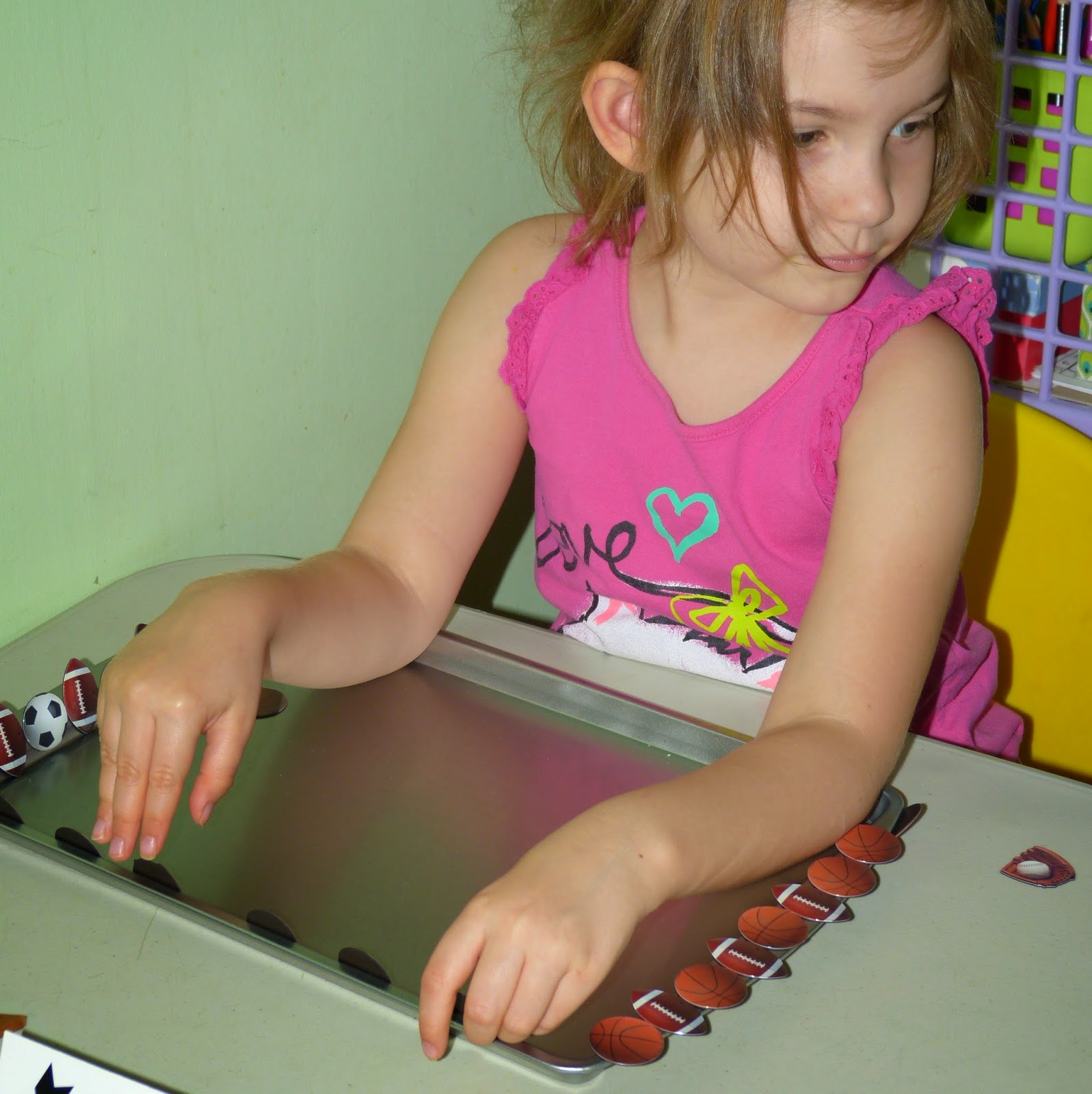I like to do math games and manipulatives after lunch each day with the kiddos. It's a great time for it - everyone finishes eating at different times, so after they bus their table and use the bathroom, they get to choose which of the available activities they want to use. I have a variety, so each day is a little different, but there are always open ended materials that lend themselves to sorting, patterning, graphing and measuring. It's interesting to watch how the children use the materials - as you can see, this child is observing another child's play! Children learn from each other, as well as from the materials... oh yes, and the teachers.

Pattern blocks are used in a variety of ways. Sometimes the children will copy and extend patterns that I made...
...other times they sort, stack, or pretend with them.
"This domino has zero spots on it," I was informed. He's correct - and without needing to do any "standardized testing," I know he has that concept firmly in place.
Cuissenaire blocks are another favorite. I remember using these in Mrs. Potts' class in first grade..a long time ago! I remember thinking of them as a "2 block" or a "7 block" - they come in 10 different lengths and colors, so orange blocks are as long as 10 white ones... but none of my preschool children has ever verbalized this without being guided to the concept. Yet most children figure out to use them as stairs, showing an intuitive understanding of the different lengths. When this child ran out of white "ones" blocks, she started using other colors to make her stairs - and later went back and replaced the stacks of white blocks to use all of the colors and lengths. She's showing that she understands longer and shorter - and again, no test is necessary.
Even very simple materials, like these sorting bears, can provide insights into what children are thinking and learning as they play. These girls sorted their bears by size and style, and lined them up (to go where?)
Later one of the girls created a graph with them. I asked what had the most (blue) and the least (brown and black, because there are zero.)
Another child had all his bears lined up ready to go to Walmart. (Back to school shopping? Day after Thanksgiving sales? That's a lot of bears lined up!)
These dinosaurs were gathering in "families".
I thought it was interesting that this kiddo not only sorted the dinosaurs by color - but then made a pattern with the different kinds of pink dinosaurs.
"These two are the same," this child informed me. I asked her how, and she told me they're the same kind of dinosaur.
This child also told me that his dinosaurs were "the same," but his explanation was that they are both orange.
"Play is often talked about as if it were a relief from serious learning. But for children play is serious learning. Play is really the work of childhood."














No comments:
Post a Comment